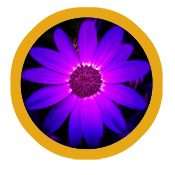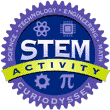SCIENCE EXPERIMENTS FOR KIDS
PLAYING WITH BLACK LIGHT & FLUORESCENCE
Get out your old 60’s posters and dance gear from the 80’s for this fun experiment
We've all seen cool pictures that glow in the dark, and word clothing decorated with bright designs that make it easier for us to be seen at night. But do you know what makes these colors and objects shine like they do?
In this experiment kids will learn about ultraviolet light and fluorescent colors, and how they interact to make different objects visible in the dark. Using an ultraviolet flashlight and household items like vitamins and vinegar, they’ll be able to put on their own classic rock light show. And that’s groovy, man.
GATHER THIS:
- Ultraviolet flashlight (Sold at online retailers and most hardware stores. Commonly known as black light.)
- White paper
- Petroleum jelly (blue light)
- Club soda or tonic water (blue white)
- Vitamins: Vitamin A, Vitamin B12, thiamine, niacin & riboflavin
- White vinegar (mix with B12 to get yellow light)
THEN DO THIS:
- Place each item on a table top in a darkened room.
- Turn on the flashlight and point it at each item.
- Look for changes in color, mix different vitamins with vinegar to determine if it will change color under the light.
ASK THIS:
- What colors do you see?
- Do different items show different colors?
- What happens if we mix vinegar with different vitamins? Does anything change?
- What else in our home will fluoresce under black light? (Hint: some credit card and some dollar bills.)
WHAT IS HAPPENING?
A black light, also referred to as a UV light (Ultraviolet Light), is a lamp that emits electromagnetic radiation almost exclusively in the soft near ultraviolet range that is only partially visible. Black light is on the edge of the visible spectrum thus giving this type of light its notable characteristics. You and your kids can see black light through the low-light receptors in your eyes that are the most sensitive to near ultraviolet light.
As you shine the light at different objects such as white copy paper, some detergents and those amazing posters form the 60’s, they fluoresce under black light. Anything containing some chemicals called phosphors fluoresce when exposed to UVA.
WHAT THIS TEACHES:
Skills: Scientific inquiry and process, observation skills, testing variables
Themes: Light spectrum, light waves, light energy, chemistry. luminescence
Join the CuriOdyssey Community
LOCATION
1651 Coyote Point Drive
San Mateo, CA 94401
Ohlone Land Acknowledgement
650-342-7755
info@curiodyssey.org
CuriOdyssey is a 501(c)(3) non-profit, Tax ID 94-1262434




